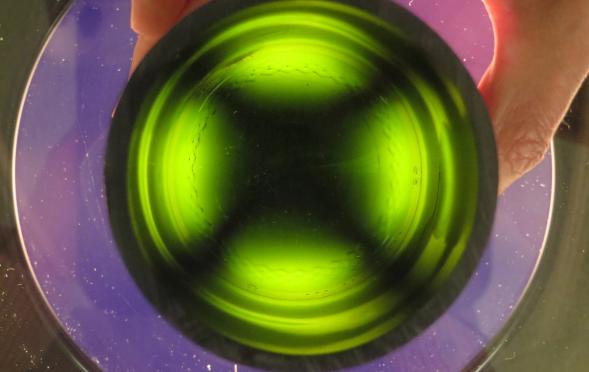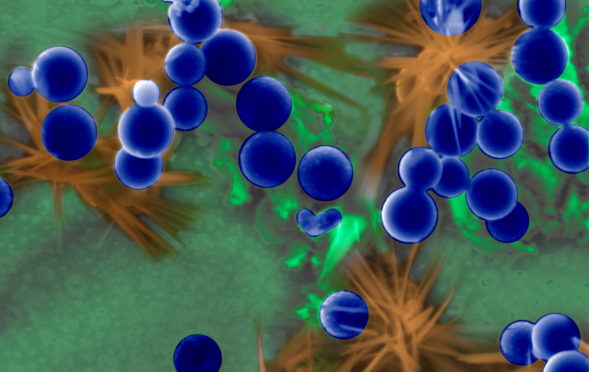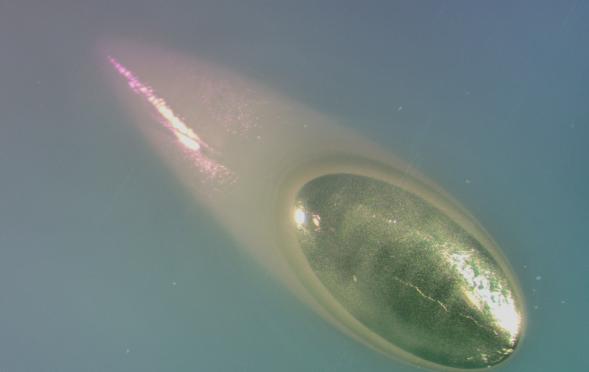Defect of the Month
Back to AGR's Library
What do leprechauns and annealing stresses have in common? They’re both invisible! Or at least, usually invisible. This photograph shows the bottom portion of a green glass bottle under polarized light (crossed polars), which is necessary to view annealing stress. The bright “four-leaf clover” pattern is due to a combination of retardation caused by annealing stress and the optical configuration of the polarimeter. Following procedures described in ASTM C148, the amount of retardation can be measured and assigned an integer value called a “temper grade,” which is a good metric for annealing quality.

Like the John Steinbeck novel of the same title, this colorized SEM image has virtually nothing to do with grapes. When an organic (i.e. carbonaceous) material such as rubber, oil, or grease enters a bottle in the hot-end of a glass plant, temperatures in excess of 700°C cause it to instantly combust. Under some conditions, soot particles can be produced due to the condensation of vaporized organic matter. The spherical soot particles in this image (blue/purple) were created by combustion of an organic contaminant inside of a glass bottle. The radiating needle-like clusters (brown) are composed of sodium carbonate (Na2CO3), likely due to sodium in the burning material. The background (green) is an amorphous carbonized residue.

Glass can be produced in a kaleidoscope of colors through the inclusion of small amounts of metal oxides in the glass composition. In the art glass industry, where color is paramount, exotic metals or metal oxides can be used that would be cost-prohibitive for food or beverage containers. Since the late Roman empire, gold has been known to create vivid red hues when added to glass. Although the host glass in this microscopic image is not red-colored, this particular stone is composed of excess gold that lingered in an art glass furnace from a prior batch.

The sparkly silver sphere in the center of this microscope image is the fractured surface of a silicon ball, a type of stone. Silicon balls are created when aluminum contamination of the cullet supply reacts with the molten glass, causing a chemical reaction that reduces the silica (SiO2) to silicon (Si). The red color of the glass is due to a painted decorative coating on the host bottle. Silicon balls are especially detrimental to container performance because they create extremely high induced stresses in the surrounding glass, often leading to spontaneous breakage of the item.
Pagination
- Previous page
- Page 6
- Next page